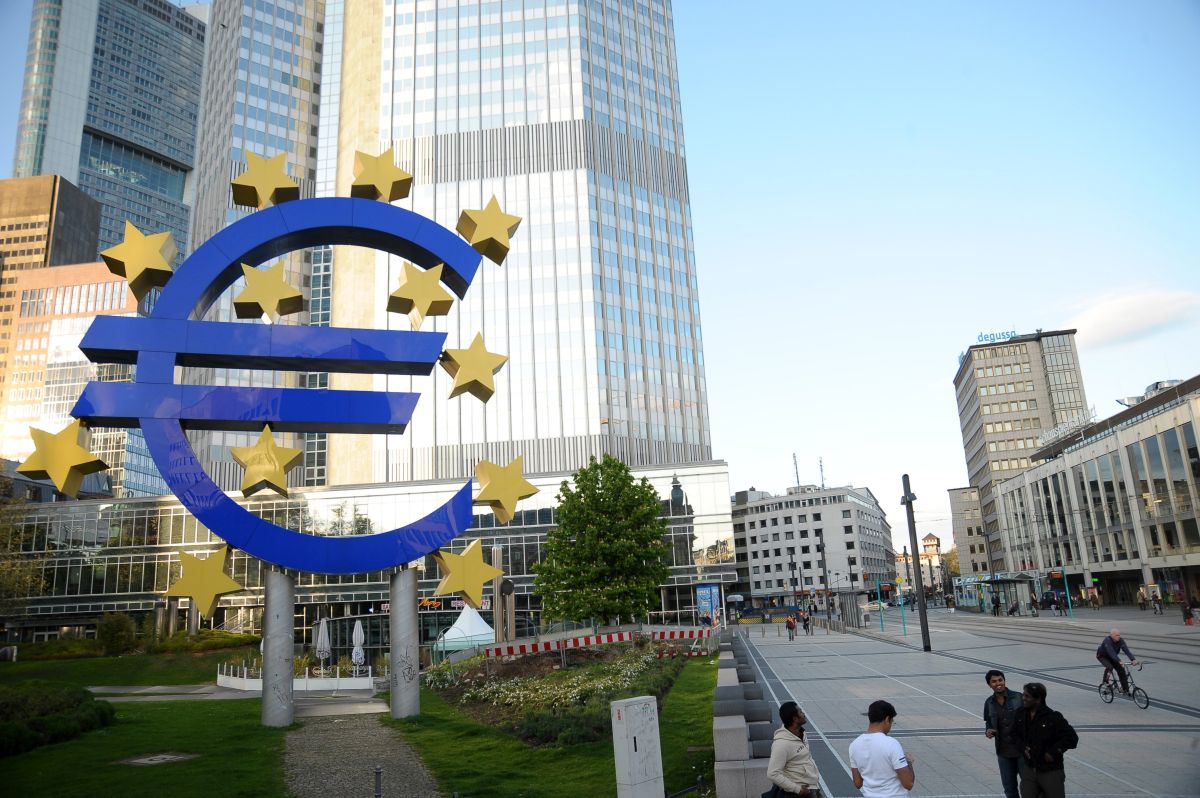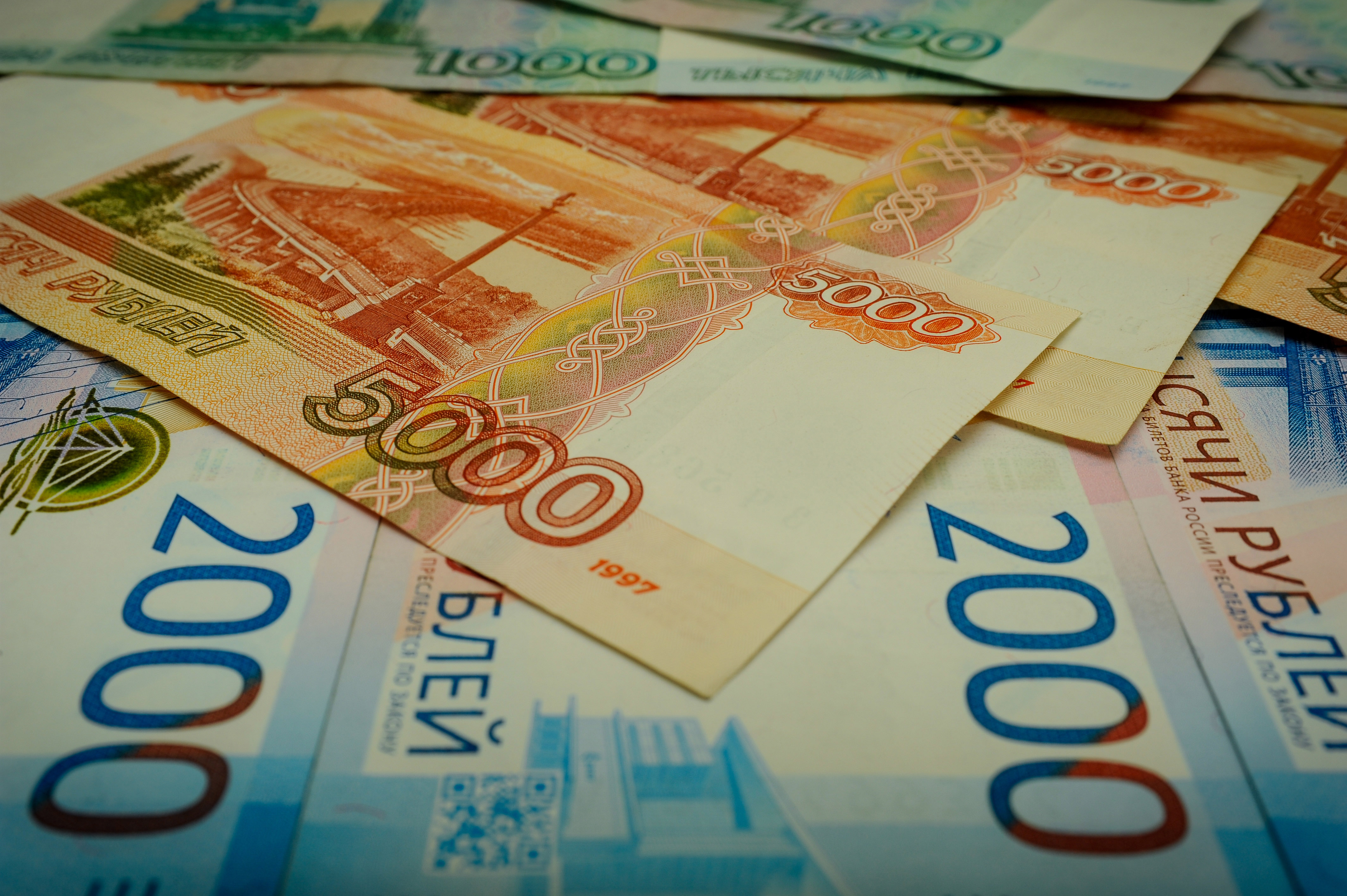The Impact of the Russian Aggression Against Ukraine on the EU's Economy
A spike in energy prices provoked by Russia’s invasion of Ukraine will inhibit the economic rebound in the EU. Member States will have to face high inflation for longer than previously expected. Forced to increase spending, they also could postpone plans to reduce their debts. The conflict with Russia is mobilising the Community to speed up the development of renewable energy and reduce dependencies on third countries, especially authoritarian ones, in strategic sectors.
 Radoslaw NAWROCKI/Forum
Radoslaw NAWROCKI/Forum
Trade exchange with Russia, Ukraine, and Belarus in 2020 amounted to 6.2% of EU foreign trade (4.8%, 1.1%, and 0.3% respectively). The consequences of severing economic ties could, however, be more serious than this percentage suggests given the character of EU imports. Russia provides 46% of the coal, 41% of the gas, and 26% of the oil imported by Member States, while Ukraine is an important supplier of agricultural products.
The Inflation Challenge
Energy prices have soared following the Russian invasion. Reducing or renouncing imports from Russia could further contribute to this trend. The U.S. has embargoed Russian imports, while the UK will stop purchasing Russian oil. In the EU, Lithuania and Poland call for banning Russian energy supplies. Germany and Hungary are among the states that oppose such a measure. They argue it would be impossible to find sufficient alternatives to the Russian resources and that the higher prices would be too taxing for their society and economy. An energy deficit could force some firms to limit output. Price rises in the energy sector quickly spill over to other goods and services. Even before the war, inflation was perceived as a threat to the post-pandemic recovery by politicians and analysts. In the eurozone, it reached 5.1% in January and 5.7% in February. The problem is even more pressing for countries outside the eurozone where in the fourth quarter of 2021 the inflation rate stood at 5.5%. High inflation reduces purchasing power and complicates the implementation of planned investments. Uncertainty related to a possible escalation of the conflict is another factor that discourages consumption and investments.
At the same time, the Member States are facing the necessity to spend more and could be forced to accept larger deficits. Assistance to refugees from Ukraine, whose number according to the UNHCR could reach 5 million, is a pressing need. Governments will also support firms that suffered due to the collapse of trade (4% of EU exports went to Russia and 1.2% to Ukraine in 2020) and citizens in relation to higher energy bills. Several states, including Denmark, Germany, and Poland, announced higher defence spending. For eurozone members, the conditions of obtaining funds on financial markets remain attractive. Following the Russian invasion, the yields on government bonds decreased. This is mainly due to the intervention of the European Central Bank (ECB), which has been buying bonds from investors. In reaction to the higher-than-expected inflation, the bank will reduce these purchases in the second quarter of 2022 (by 25%) but it has not announced a definite increase in interest rates this year. ECB officials argue that restricting access to cheap money prematurely could dampen growth. In addition, hiking rates is not seen as an ideal solution against inflation that is mostly provoked by a supply shock (energy). A majority of the bank’s Governing Council believe that the turbulence on the energy market is temporary and that inflation will be close to the desired level of 2% by next year. Given the Russian invasion, such a scenario could turn out to be overly optimistic. At the same time, the war creates circumstances in which support given to Member States through asset purchases becomes ever more important.
Problems for Agriculture
The main challenge for EU agriculture is the higher prices of fertilisers produced from natural gas. The negative effect will be strengthened by the sanctions on Belarus and Russia, both important fertiliser producers. Pricier fertilisers will provoke a spike in the cost of food, while problems with availability could translate into lower yields.
Russia and Ukraine are important exporters of cereals. Ukraine is the third-largest EU partner in the import of vegetable products (7%), with a quarter of cereals and vegetable oils sourced from this country. Ukraine is also an important provider of genetically unmodified soya used for animal feed, but exports are currently blocked. What’s more, the war could prevent agricultural activity in the coming weeks and thus wipe out a substantial portion of this year’s crop. Although the EU grows enough food for itself, reduction of imports from eastern neighbours could drive prices up. The situation is much more challenging for the countries of North Africa and the Middle East, which are import-dependent and rely much more on deliveries from Ukraine and Russia (even up to 50% of their grains). In case of shortfalls, they will expect EU assistance.
The interruption of imports important for EU agriculture is used by agro-industrial lobbies that are critical of the “Farm to Fork” strategy designed to mitigate the impact of agriculture on climate and the environment. Opponents of the plan try to persuade the European Commission that implementing reforms that could diminish production should be delayed. However, Member States could try to use the higher prices of fertilisers to encourage more farmers to take up organic farming.
The Impact on Climate Policy
Turmoil on the energy market—especially if Russian imports are significantly cut—could obstruct the Union’s plans to reduce greenhouse gas emissions. In the short term, it will be extremely complicated to find substitutes for the totality of Russian gas deliveries. Coal-fired power plants could be more used, but it would result in greater emissions. However, in the long term, ending trade with Russia will not threaten the Union’s climate ambitions. The current situation only strengthens EU leaders’ conviction about the necessity to improve the resilience, energy efficiency, and capacity to roll out more renewables and nuclear energy. Given the likely increase in public spending in many domains, the key challenge will be to secure sufficient funds to accelerate the green transition. The availability of some raw materials could be a problem. Sixteen percent of the platinum used in the production of fuel cells, important for the conversion of hydrogen into energy, comes from Russia.
Conclusions and Prospects
Higher energy and food prices coupled with political instability will slow economic growth in the EU. The scope of the negative consequences will depend on the duration of the armed conflict and the state of relations with Russia once the latter has been terminated. Member States, obliged to increase spending, will face further expansion of public debt. The Union could prolong the suspension of fiscal rules that prevent members from generating excessive budget deficits. The rules, shelved during the pandemic, were to be reactivated next year. Member States will expect financial assistance from the EU. Parts of the recovery fund, allocated for loans and yet unused, could be mobilised for that purpose. Should the crisis last longer, the Commission will probably try to convince members to enlarge the pool of money through Eurobonds.
The Russian aggression will not affect the long-term vision of the Union’s development focused on strengthening strategic autonomy through the green and digital transitions. Conflict with a power that used its privileged position on the energy market to put political pressure on Member States is another factor that—after the pandemic—will mobilise EU leaders to strive for greater self-sufficiency in strategic sectors, diversify deliveries of key raw materials, and seek opportunities for sourcing some of the latter internally. Food security also will gain greater importance.
In Poland, the war has provoked currency depreciation and increased inflationary pressure. Unlike the eurozone members, Poland cannot count on improved conditions for getting additional funds on international markets (the yield on Polish bonds has increased). Therefore gaining access to the EU recovery instrument becomes even more important—according to the Commission, the funds could add 2% to Poland’s GDP by 2024.





